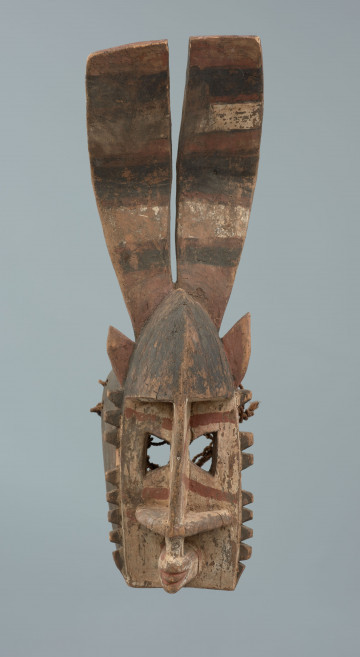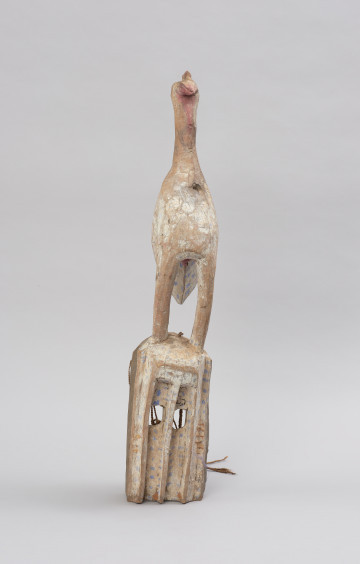
Gomintogo mask
między 1951 — 2000
National Museum in Szczecin
Part of the collection: Collection of Dogonian art
Masks and the awa cult that regulates their use play an important role in Dogon culture. The inhabitants of the Bandiagara Escarpment have over seventy types of masks, which only appear on the occasion of very elaborate funeral rituals. The largest number of them dance during the Dama funeral festival ending the long period of mourning for the deceased. The period between death and the Dama festival is the time when nyama - the life force of the deceased leaves the family, the village, the whole community completely. Dama must bring in the order violated by death and bring the deceased into the ranks of the ancestors. The masks dancing during this festival reflect the world known to the Dogon. Among them, there are representations of animals living in the bush, images of neighbouring peoples, representatives of the occupations carried out by the Dogon and related caste representatives. One can also see mythical figures and symbolic representations of material objects. The dancers are exclusively men, members of the Awa society. According to oral tradition, the masks come from the bush, which is a world inhabited by wild animals and other creatures dangerous to ordinary people. The secret of the masks was stolen from the inhabitants of the bush by a woman, but the men thought that their strength would allow them to dominate society, so they stole the woman's masks and hid them from the others. In the face part, the Dogon masks are geometric and abstract. They form a whole only with the costume made of dyed plant fibres. The first fibre costumes were created to hide the genitals of the Earth Mother, scarred by the pale Yurugu fox and are a harbinger of the end of chaos.
Ewa Prądzyńska
Author / creator
Dimensions
cały obiekt: height: 79 cm, width: 50 cm
Object type
sculpture, mask
Creation time / dating
Creation / finding place
Identification number
Location / status

między 1951 — 2000
National Museum in Szczecin

między 1951 — 2000
National Museum in Szczecin

między 1951 — 1998
National Museum in Szczecin
DISCOVER this TOPIC
National Museum in Szczecin
DISCOVER this PATH
Educational path